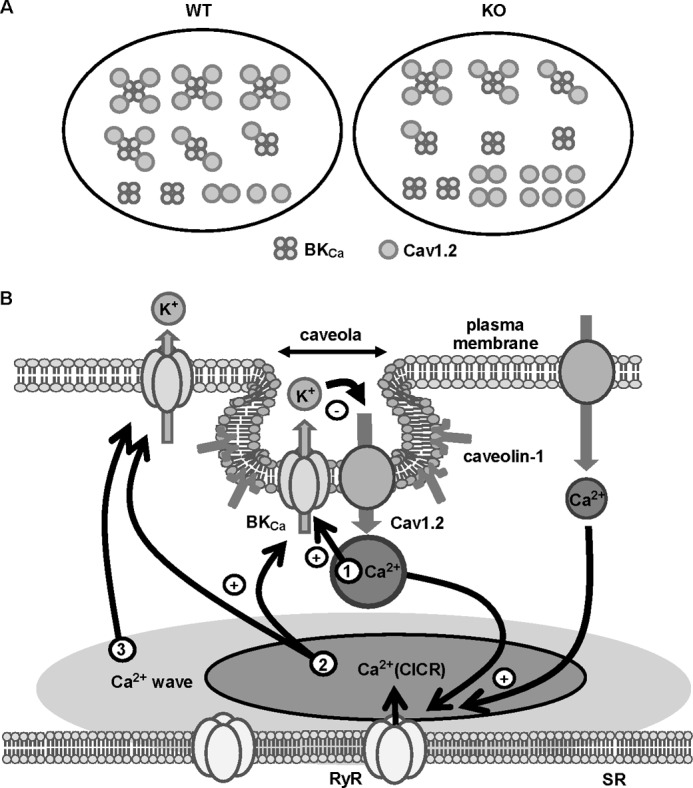FIGURE 8.

BKCa-Cav1.2 complex in VSMCs. A, BKCa-Cav1.2 complex can consist of one BKCa (a tetrameric BKα assembly) and four Cav1.2 channels. In caveolin-1-deficient (KO) myocytes, the interaction between BKCa and Cav1.2 is attenuated by following reasons. The BKCa-Cav1.2 complex, which is facilitated by the accumulation of these channels in caveolae by the interaction with caveolin-1, is reduced in KO myocytes. The number of Cav1.2 within the BKCa-Cav1.2 complex is also reduced in KO myocytes. B, BKCa can be activated by three steps of Ca2+ increase. The first is Ca2+ influx from tightly coupled Cav1.2. The second is Ca2+ release from loosely coupled RyR, i.e. CICR. The third step is global Ca2+ level elevation evoked by the Ca2+ wave. We propose that large portions of the BKCa-Cav1.2 complexes are localized in caveolae and that the complex of 1 BKCa with 4 Cav1.2 cluster may contribute to initiate Ca2+ local events in caveolae as the key membrane structure in Ca2+ microdomain, which, however, includes the effective negative feedback mechanism for cytosolic Ca2+ regulation.
